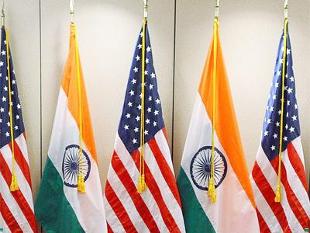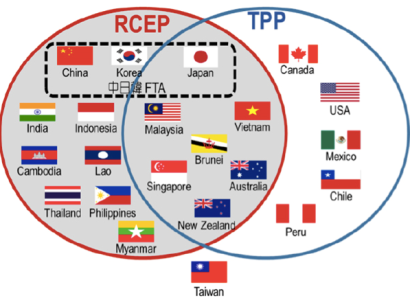"If India decides to be a part of the TPP agreement, the country will have to focus on upgrading its production standards. But such measures could take a lot of time adversely impacting the country’s export industries. Additionally, India’s labour market will also have to undergo a sophisticated evolution. The labour market in India is dominated by informal employment that accounts for 92 per cent of the total labour force employment (as per the NSSO data 2011-12)."

India and China two important economies are not a part of the coveted the Trans-Pacific Partnership Agreement (TPP), initiated by the US. Should India be a part of the deal to enjoy duty-free access to the US market or is there some other way, it can benefit by not being a part of it is the moot point now.
TPP benefits and India’s position

The US-led regional trade agreement, initiated in November 2009 under President Barack Obama’s administration concluded in October 2015. The treaty includes the US and 11 other Asia-Pacific countries, including Australia, Brunei, Canada, Chile, Japan, Malaysia, Mexico, New Zealand, Peru, Singapore and Vietnam. The major motive of this movement is eliminating tariff and non-tariff barriers on trade in goods and services, push foreign investment among member countries, conform to the newly crafted labour and environmental standards, intellectual property (IP) rights framework and establish a level-playing field for state owned enterprises (SOEs) and private firms (Office of the USTR).
Highly condemned for its secretive nature, experts call TPP as something more than just a free trade deal. They say through this agreement, the US seeks to integrate its economy with the Asian economies. In the Indian context, TPP member nations such as the US, Japan and Singapore have traditionally been important trade partners. As per industry estimates, India’s trade with 12 TPP countries was recorded to be worth $31.6 billion in 2003, which increased to $152.3 billion in 2014, while the share of TPP countries in India’s world trade declined from 24 per cent in 2003 to 19.6 per cent in 2014. However, these nations continue to be the important export destinations for some Indian products like petroleum oils and bituminous minerals, textiles, agricultural products and motor vehicles. The US accounted for the largest share of 13.44 per cent in India’s world exports in 2014, followed by Singapore and Vietnam with 3.05 per cent and 2.06 per cent respectively.
Since around 48.5 per cent of India’s total textile exports are exported to the US at an average bound tariff rate of 27.3 per cent, the provision of a ‘yarn forward rule’ in the TPP, will benefit Hanoi textile industry, since it will have duty-free access to the US market post-TPP. This yarn forward rule, coupled with the need to harmonise domestic production standards upwards will considerably alter India’s position in the GVCs for textile products, leading to greater export losses for the country.
How India can cope-up with competition
If India decides to be a part of the TPP agreement, the country will have to focus on upgrading its production standards. But such measures could take a lot of time adversely impacting the country’s export industries. Additionally, India’s labour market will also have to undergo a sophisticated evolution. The labour market in India is dominated by informal employment that accounts for 92 per cent of the total labour force employment (as per the NSSO data 2011-12). The country is yet to ratify three of the five internationally recognised labour principles as laid down in the 1998 ILO Declaration that have been a basis for the labour standards set out in the TPP agreement, which again is a time consuming process.
Experts say India’s strong trade relations with most TPP economies viz. Japan, Singapore, Chile, Australia and Canada could help in further strengthening ties with these countries mitigate some of these export losses, making it less costly for India to stay out of the TPP. Moreover, the negotiations on other multilateral trade agreements such as the Regional Comprehensive Economic Partnership (RCEP) will have to be expedited.
The country also needs to focus on improving the bilateral investment treaty (BIT) with the US, to remain competitive in the post-TPP era and push for bilateral dialogues with other Asia-Pacific economies like China, Hong-Kong.
Along with reforms in logistics and other sectors and government support in the form of able export policy, India’s exports sector will also have to deal with the threat of being negatively impacted by the Trans Pacific Partnership, a trade agreement “Trans Pacific Partnership countries account for 25 per cent of India’s exports. So by not being a part of TPP, India risks losing out a significant chunk of its export market to rivals. Clearly, India needs to invest quickly in skilling its large manpower and developing infrastructure to be able to attract foreign investment and become a world-class exporting hub,” a recent report by Crisil exclaims.
www.crisil.com












